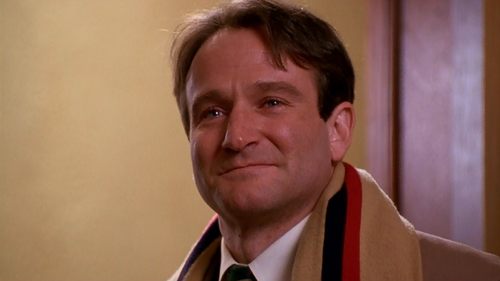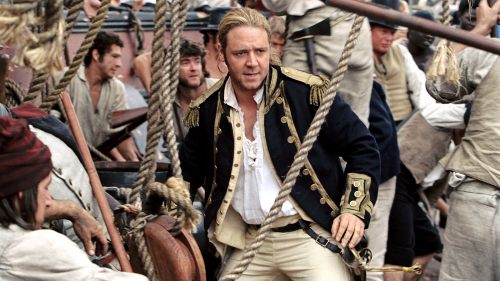The Strange Legacy of PICNIC AT HANGING ROCK
Joan Lindsay’s 1967 novel Picnic at Hanging Rock begins with a tantalizing note, a mystery within the mystery of the book itself: “Whether Picnic at Hanging Rock is fact or fiction, my readers must decide for themselves. As the fateful picnic took place in the year nineteen hundred, and all the characters in the book are long since dead, it hardly seems important.” Lindsay was famously cagey about whether any of her dreamy, ethereal novel was actually true--something which intrigued director Peter Weir so much he decided to keep the ambiguity going by adding a similar introduction and postscript to his 1975 film adaptation.
This week, Lindsay’s novel gets the Amazon treatment, with a mini-series adaptation debuting on May 25, starring Game of Thrones’ Natalie Dormer. It’s an interesting time to revisit the book, with its themes of repressed female sexuality and sly critiques of colonialism holding a warped mirror up to our present. But before you binge, it’s worth it to check out (or revisit) Weir’s haunting original adaptation, which not only captures the book’s mystical qualities, but also became an unlikely watershed moment for Australian cinema.
Picnic at Hanging Rock explores a bizarre event in 1900, where three girls and a teacher mysteriously vanish from a girls’ boarding school outing. Among those missing is Miranda (Anne Lambert), the school’s most beautiful and popular student. The disappearance sparks an obsession in everyone connected to it, including the girls’ headmistress (a great, barely-hinged Rachel Roberts), schoolmates, and community. Later, one of the missing girls, Irma (Karen Robson), is recovered, but remembers nothing. The others are never seen again.
The film was one of the first financed by the South Australian Film Corporation, a government-funded entity created to give Australia’s flagging film industry a shot in the arm. It was Weir’s second feature. His first was The Cars that Ate Paris, a black comedy about an outback community using tricked-out murder vehicles to off tourists from the city--five years before George Miller would tread similar territory with Mad Max.
At the time, the only successful Australian-made films were bawdy comedies like The Adventures of Barry McKenzie or the Alvin Purple films, movies trafficking in broad stereotypes and abundant cleavage. A period film like this one was a move toward respectability, but also a risk. The gambit worked; Picnic at Hanging Rock played at Cannes and picked up a few awards. Its success effectively paved the way for a torrent of Aussie cinematic output through the '70s, '80s and '90s, from “Ozploitation” classics like Patrick and Razorback to arthouse fare like My Brilliant Career and Sweetie.
Only in Australia would a film like Picnic at Hanging Rock be the movie to hang your country’s prestige picture hopes on. There’s a strange, pagan energy hanging over it, not quite horror, but far beyond the bounds of a traditional period drama. Weir hints throughout at a refined late-Victorian society bursting with repressed sexual energy and misplaced colonial dominance, trying to impose itself on an ancient land. It results in an atmosphere film scholar David Thomson deliciously describes as “A combination of fineness and tenderness with quite terrible things.”
In Weir’s hands, all those hints help the film, rather than hold it back. Part of the effectiveness comes from using real locations. The girls’ school, Appleyard College, is an actual Georgian-style mansion, Martindale Hall, plunked in the middle of the outback, a real-life example of European colonial refinement in a spot it has no business being. It stands in stark contrast to the craggy, aboriginal nature of Hanging Rock, an outcropping of volcanic stone crawling with poisonous ants and snakes, and defined by eerie, face-like formations.
The irony of a group of virginal young ladies climbing all over the remnants of an ancient volcanic ejaculation isn’t lost on Weir. He shows the white-clad Miranda, Irma and classmates Marion and Edith walking up the rock holding hands and later lying down in a circle, as though they’re taking part in a sacrifice. Later, when Irma reappears and visits the school, she’s no longer wearing white, but red. When her classmates clamor hysterically for answers, you get the sense they aren’t asking out of concern, but because she’s been through a rite of passage they haven’t.
Weir also frequently shows dominance of nature, not just in the rock, but in the attempts of the genteel European transplants to make the harsh land feel more like home. In one montage, ants crawl over the remnants of a cake, and a lizard skirts by a slumbering Miranda. A young aristocrat (Dominic Guard) goes looking for the girls on the rock wearing his best riding suit, and is quickly undone by the experience. In the struggle between an arrogant civilization and an unforgiving land, the land’s going to win every time.
None of this is ever stated outright. Weir never slams viewers over the head with symbolism, or explains his motivations (traits that would define his filmmaking throughout his career), but simply lets the images and performances speak for themselves. Picnic at Hanging Rock provides a perfect catalyst for the struggle of civilization against nature that characterizes not just Weir’s movies, but many of those of his countrymen. It’s not just that it’s hard living on the fringes of a primal, untamed country--especially when you’re living with a cloakroom of emotional hang ups--it’s that it’s ridiculous anyone would even try.



